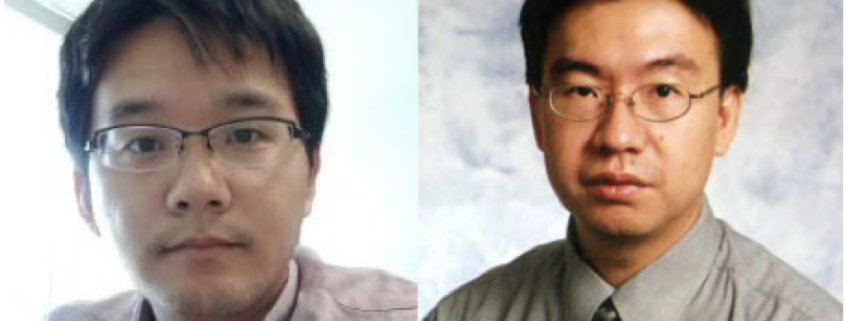Pneumatic Actuated Soft Micromold (PASMO) device for Creating 3D Collagen Microparticles

Po-Jung Huang and Jun Kameoka
The following Great Innovative Idea is from Po-Jung Huang and Jun Kameoka. Their paper called Pneumatic Actuated Soft Micromold (PASMO) device for Creating 3D Collagen Microparticles was one of the featured talks at the Computing Community Consortium (CCC) sponsored Material Robotics (MaRo) Workshop at the 2017 Robotics Science and Systems (RSS) Conference.
The Idea
Three-dimensional cell culture is the method that can simply the process for in vivo test. Unlike two-dimensional cell culture, three-dimensional cell culture provides sufficient information, like cell-cell communication and cell-matrix interaction to simulate real human tissue. Pneumatic actuated soft micromold (PASMO) provides a method to generate collagen based three-dimensional microenvironment for simulating progression of tumor and extending to cancer model. PASMO device is integrated the soft actuator and particles’ template and provides controllable process to manufacture and release collagen particles. The mechanism for releasing collagen particles is generating mold expansion after deforming PASMO device through pneumatic actuation. During this actuation and deformation, collagen particles will float and be squeezed out from PASMO device in culture media or water without any damage. Additionally, PASMO device can be used in any material, especially for extremely soft material, such as alginate or MatrigelTM, to build cellular three-dimensional microenvironment.
Impact
This is the first approach to create the three-dimensional collagen cellular microenvironment through pneumatic actuated soft micromold (PASMO). The approach not only can easily prepare the collagen microenvironment for cells but also can mimic the human body for constructing 3D microenvironment. This 3D microenvironment provides a simple way to simulate and predict cellular response from patients. Based on these responses, we can discover and develop the proper treatment for patients as personally medical care in the future.
Other Research
Po-Jung Huang: My research interests in using soft actuator to create microenvironment for encapsulating cells or bacteria. And this application of microenvironment includes cell therapy, cancer research, especially for anti-cancer drug screening, bioreactor, and biosensor. Moreover, this microenvironment integrates with microfluidic system to mimic the circulation system in order to simulate the tumor progression in human body.
Jun Kameoka: My research interests in using soft actuator to apply in biomedical application, especially for bio-maching, like laparoscopy. Moreover, I am also focused on developing nano-fiberous microfluidic device to detect and monitor the single molecular.
Researchers’ Background
Po-Jung Huang: Micro- or Nano- fluidics, soft actuator, and functional biomaterial
Jun Kameoka: Bio-nano machining, nanostructure science and engineering, nano-sensors and molecular manipulation, micro and nano-fluidics, bio-nano hybrid devices for medical applications
Links
Po-Jung Huang: https://www.linkedin.com/in/po-jung-huang-a5354744/
Jun Kameoka: https://engineering.tamu.edu/electrical/people/jkameoka










